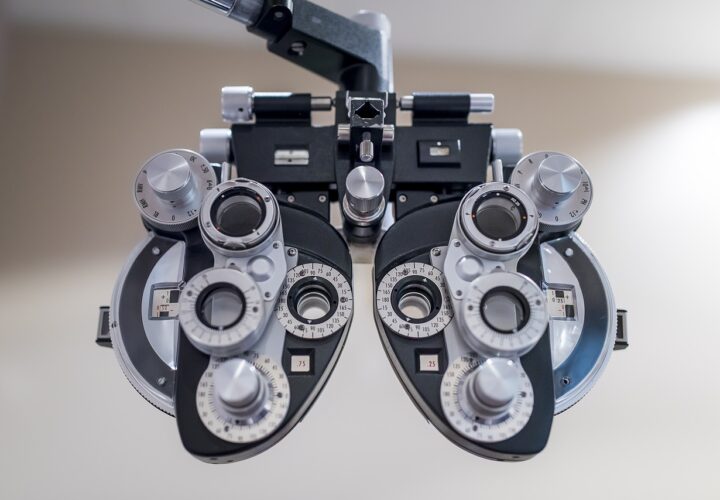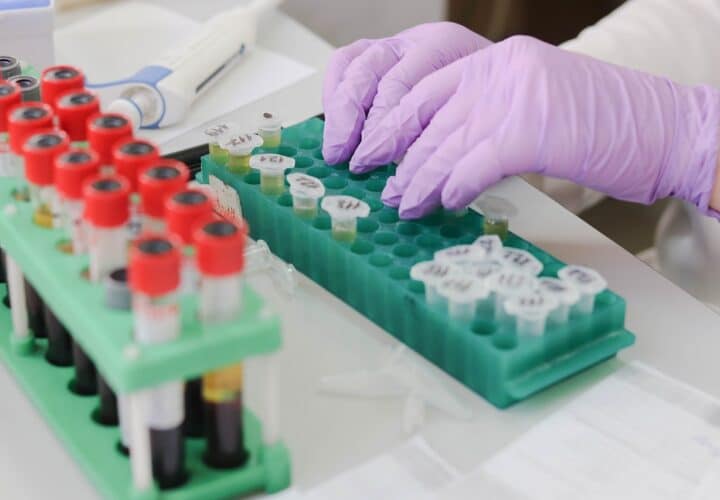CERA deputy director Peter van Wijngaarden talks about CERA's new Alzheimer's diagnostic technology.
While most Alzheimer’s research focuses on finding a cure for the disease, plenty of researchers are also looking into developing and improving technology used to detect Alzheimer’s before symptoms appear. One research center, the Center for Eye Research in Australia (CERA), is currently in the trial phase for a new early detection test based on scans not of brains, but of eyes.
- Retinal tissue can show accumulation of beta-amyloid proteins, a common indicator of Alzheimer’s
- Retinal scans are much less invasive and expensive than traditional PET scans and lumbar punctures
Professor Peter van Wijngaarden, deputy director of CERA, shares the aims of the center’s research, the technology’s potential for early diagnosis and the impact it could have on future research.
How Does a Retinal Test Compare to Other Early Detection Tests?
Being Patient: Lately there’s a lot more research looking for easier ways to diagnose Alzheimer’s or cognitive impairment. Tell us a little about what you’re working on and how it works.
Peter van Wijngaarden: So, we have been working for a few years looking at the retina, the neural tissue at the back of the eye, and whether that can provide us with clues to Alzheimer’s disease. The reason we’ve pursued that is that the retina is something that eye doctors look at every day, and what we know from history is that that tissue is a developmental extension of the brain, so we can image the brain without having to look through a thick bony layer. And so there is an opportunity to detect brain disease early.
Being Patient: There are tests for people who suffer from brain tumors that are sometimes diagnosed through an optician looking through their eyes. Can we compare it to that? Is it similar in terms of that early diagnosis?
Peter van Wijngaarden: To an extent, that’s a change in the nerve at the back of the eye which shows raised pressure around the brain. In Alzheimer’s disease we’re interested to see whether in the retina tissue there are similar changes occurring. We know from studies of tissue samples that some of the changes that occur in the brain also occur in the retina—the accumulation of abnormal proteins, such as amyloid-beta, and the loss of neural tissue.
So, we have at our disposal really advanced imaging technologies, even in standard eye care, that show us measures of that nerve tissue loss, and a lot of studies have been published looking at nerve tissue loss at the back of the eye and associating that with Alzheimer’s disease. One of the limitations of that approach is that it’s not specific to Alzheimer’s disease, so we really sought over the last few years whether we could find signals specific to Alzheimer’s disease.
Where Does the Technology Come From?
Being Patient: If I’m not mistaken, you’re not the first group to look to the eyes for early detection. How is what you’re developing different from what’s out there or what’s being studied currently?
Peter van Wijngaarden: So, we, like all scientists, stand on the shoulders of the people that have come before us, and we were very fortunate to take advantage of two major innovations. The first was developed by scientists at NASA for satellite imaging of the earth. They developed in the late 70s a technology known as hypo-spectral imaging where they imaged an object, in their case the earth from space, with different colors of light.
What they found is that when you image with different colors of light, you get very rich information about what you’re imaging that speaks to its structure, and it turns out that a lot of prospecting of the earth for minerals is done this way, and it’s used extensively in industry. So, we wanted to apply that technology to the eye and see whether we could see amyloid-beta in the retina. That was one foundational technology.
A group of scientists at the university of Minnesota has also applied this technology using a microscope on tissue samples from individuals with confirmed Alzheimer’s disease, looking at brain tissue and retinal tissue, and they found that there was a distinctive signal that they could see in people with Alzheimer’s disease that was not present in people without. So, we sought to apply that technology in vivo.
Being Patient: So simply put, you’re using a NASA-grade camera to scan the back of the eye where the retina is, and you can actually visibly detect plaques potentially at an earlier stage before people are in full-blown Alzheimer’s disease. Is that correct?
Peter van Wijngaarden: That’s a great summary. The work that we’ve done to date shows that we can, through a simple image of the back of the eye, instead of a white light flash that you might have when you have a photograph taken with an optician or your ophthalmologist, you get a rainbow-colored flash. We then can analyze that data using special computer machine-learning approaches to detect a signal that’s specific to Alzheimer’s disease.
How Can This Technology Help At-Risk Individuals and Future Research?
Being Patient: Before this interview, I was telling you that sometimes I think, “Oh gosh, do I really want to know if I’m eventually going to end up with Alzheimer’s disease?” How early would I really want to know, and how can this technology help someone like me?
Peter van Wijngaarden: That’s a very difficult and a very personal question for everyone who’s in that situation. It’s a question that we’re currently trying to answer from a scientific perspective is when does that retinal signal become positive, and we’ve been very fortunate to have funding from the Alzheimer’s Drug Discovery Foundation to start exploring that question.
So, we know at the moment that our test can distinguish those that are PET positive for amyloid-beta from those who are PET negative. So we think it’s useful at that very early stage of the disease, but we know that amyloid accumulates over up to twenty years before that point, so the Alzheimer’s Drug Discovery fund is supporting us to look at a screening study.
And so, we are taking cognitively normal, middle-aged people who are at risk of Alzheimer’s disease because of a family history, and we are following them and comparing our retinal scans with lumbar punctures—so the cerebral spinal fluid tests—and brain imaging. That’s through a really fantastic collaboration we have with an Australian study called the Health Brain Project.
Being Patient: Tell us a little about what this would mean for research. If you are able to identify candidates early on before they’re exhibiting symptoms of Alzheimer’s, what does that mean for research?
Peter van Wijngaarden: It means we can streamline the identification of people who might be suitable for inclusion in trials of new disease-modifying therapies. At the moment, to identify people using lumbar punctural PET scans for these trials well before the onset of memory and cognitive problems costs drug companies a tremendous amount, up to $40 million to identify the very people to be included in the studies. So, if we can streamline that it would be a major innovation, and we hope that it would fuel more investment from drug companies in the field of disease-modifying therapies.
From an understanding of the disease process, we’ll be able to track individuals over time. Our tests can be repeated daily if you want to—it’s completely non-invasive and safe—so you could actually plot trajectories and map that against other changes.





